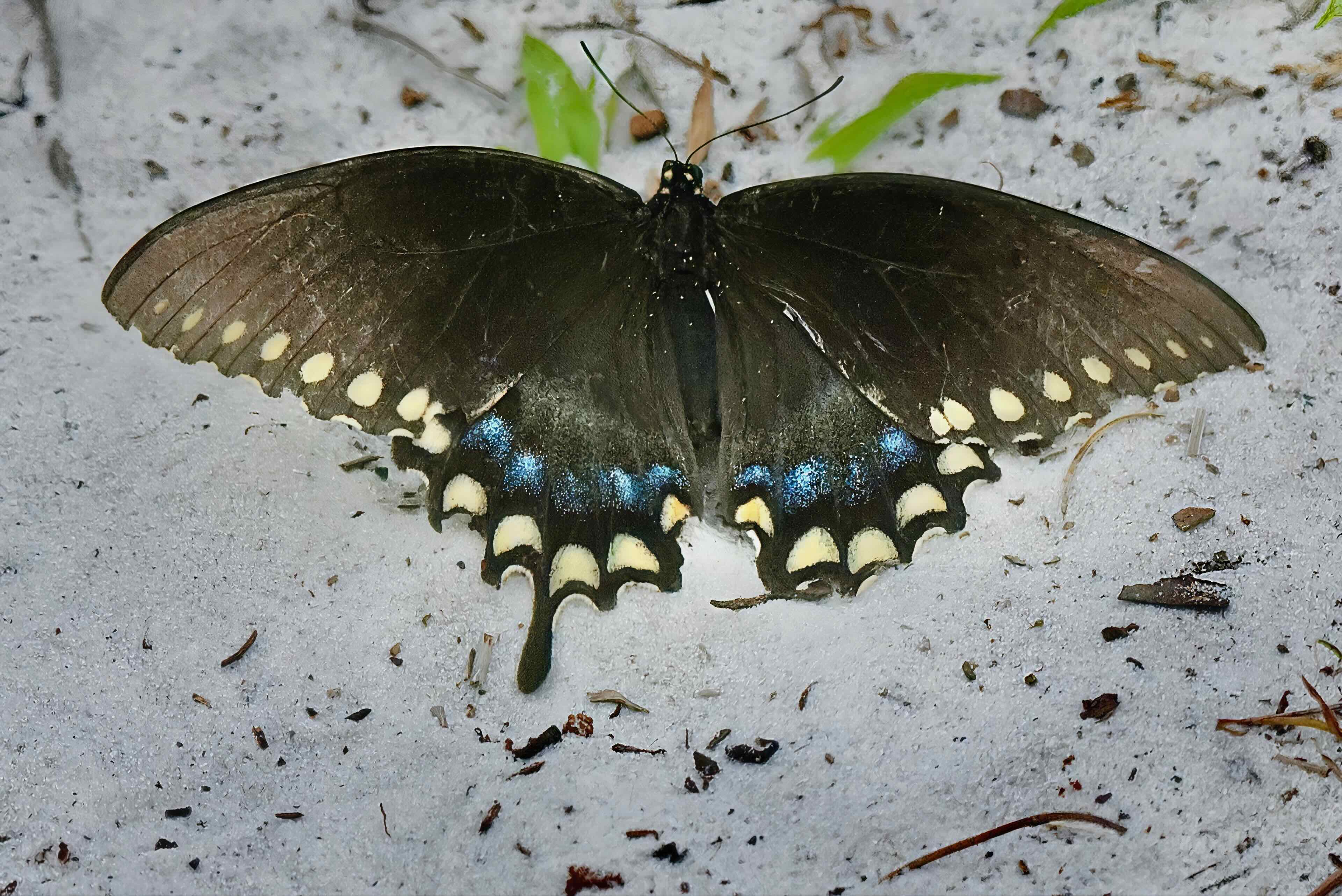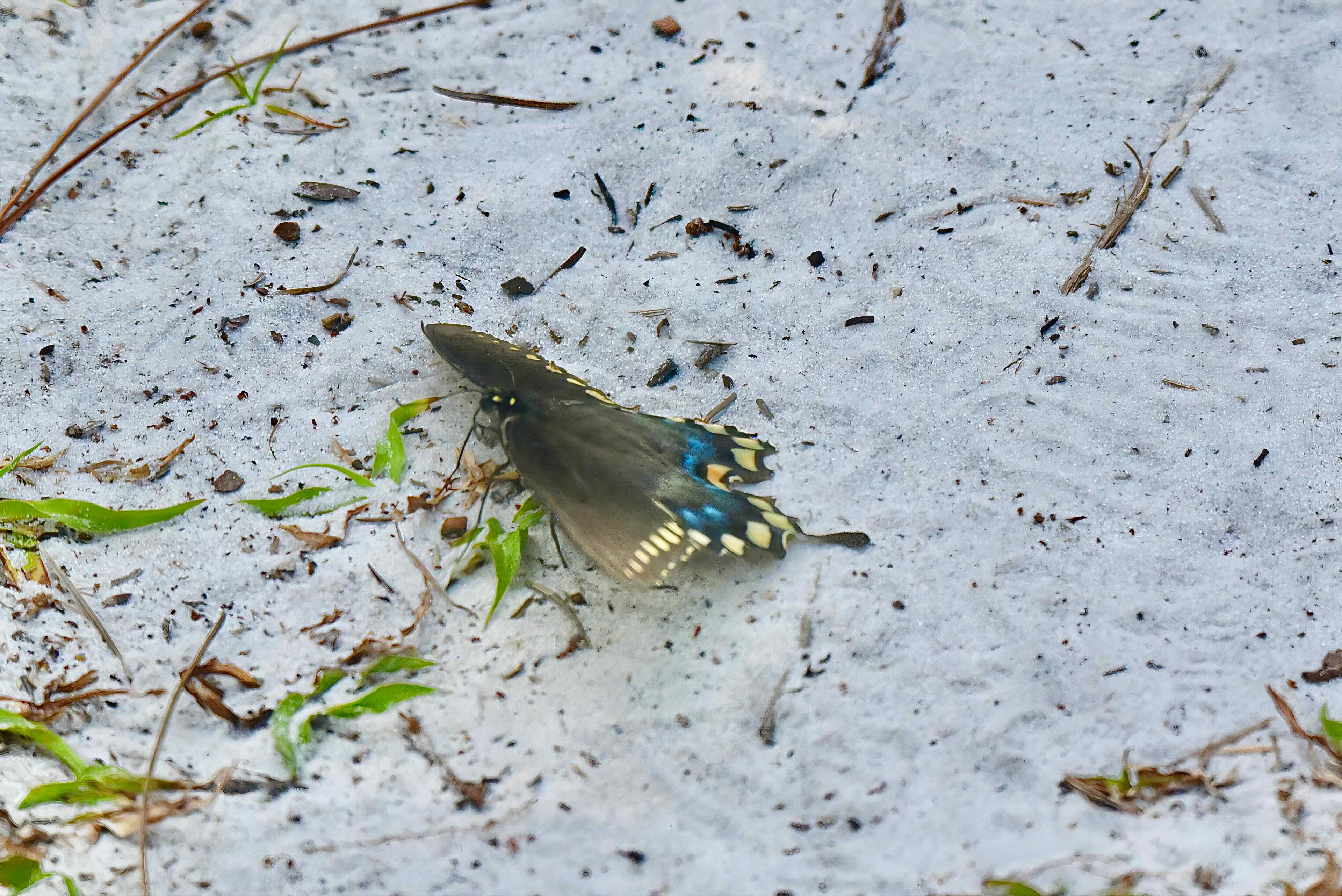
It faces an existential threat and there is some question as to its place in the taxonomic scheme of things, but the spicebush swallowtail, Papilio troilus, remains one of Florida’s more beautiful butterflies.
The existential threat is in the form of a tiny beetle that carries a disease fatal to the spicebush swallowtail’s favorite host plants. The taxonomic issue deals with what genus to which the spicebush swallowtail belongs.
More on both issues, but first let’s get to some spicebush swallowtail basics.
It is a fairly large butterfly with a wingspan of 3.8 inches to 4.8 inches. It is mostly black above, with a series of small pale yellow or ivory spots along the rear edge of the forewings. The hind wings are also black with some blue (females) or blue-green (males) mixed in. There are more prominent pale yellow spots along the trailing edge.
The underside of the spicebush swallowtail’s wings have rows of large, bright orange spots, with some light blue mixed in.
Spicebush swallowtails range as far north as southern New England, west to Kansas, Oklahoma and Texas, and south to Florida. They can be found throughout Florida, through the Panhandle and Peninsula, but they might be absent from the Keys and the Miami area.
Favorite habitats include the edges of deciduous woodlands (likely where their favorite host plant are to be found), fields, swamps, parks, roadsides and yards.
They nectar on a large list of plants, including mimosas, thistles, milkweeds, dogbane and lantanas found in South Florida. Males will sip from mud puddles or, more frequently, from wet, sandy soils in order to pick up minerals (which is what the butterfly seen in our photos might be doing).

Host plants are mainly members of Lauraceae, the laurel family, mainly silk-, swamp- and red bay trees in our part of the world. In places, they use spicebush plants as well; up north sassafras is on their menu.
Males spend their time patrolling around host plants looking for the ladies of the species. Females lay their eggs singly underneath a leaf of one of the hosts. Once hatched, the young spicebush swallowtail larvae will cut a slit in the leaf and spin a bit of silk from the leaf edge to the inside. As the silk dries, it will contract and form a shelter over the larvae. He’ll spend his days here, safe from predators, and emerge to feed at night.
In Florida, spicebush swallowtails are in flight, or active, between February and October, and produce at least three generations a year. In the north, two generations a year is the norm.
The existential threat to the spicebush swallowtail is a tiny beetle, Xyleborus glabratus, the redbay ambrosia beetle, an invasive bug that carries the fungus that causes laurel wilt, a deadly disease that kills trees in the Lauraceae family, which, as noted, the spicebush swallowtail relies on as hosts for its caterpillars.
The redbay ambrosia beetle first came to note in 2002 at a port in Georgia. As of 2023, it had spread to nearly 300 counties in the United States as far west as Texas and as far north as Kentucky. That includes most, if not all, of Florida. Walk through the woods and see a bay tree standing, its leaves brown, still on the branches, and you’re likely looking at a victim of the redbay ambrosia beetle. There’s also the potential for the fungus to transfer to other ambrosia beetle species, which would speed up the spread of the disease and the further decline of Lauraceae members.
Thing is, there is some evidence that spicebush swallowtails will use other trees as hosts, but there’s also evidence that they don’t like them very much. One experiment found that spicebush swallowtail caterpillars would starve themselves to death rather than eat the leaves of these other potential hosts.
The taxonomic matter is far from existential, just a matter of how we humans classify things. The great Swedish naturalist, Carl Linnaeus classified all swallowtails in the genus Papilio, which happens to be Latin for butterfly. There’s been a modern push re-classify certain swallowtails, including the spicebush, into Pterourus. Most sources still use Papilio, however.
In any case, spicebush swallowtail butterflies are members of Papilionidae, the swallowtail family.
Blue Spring State Park
